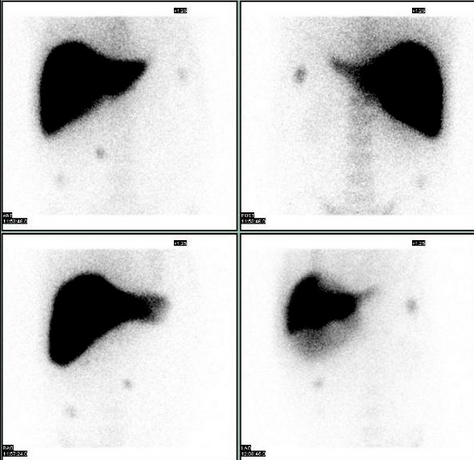What is a Hepatobiliary Scan? - From the desk of Marcus R Hall
A Hepatobiliary Scan is a Nuclear Medicine Procedure designed to evaluate the patency of the hepatobiliary system's duct work. In other words it checks for blockages, and the functionality of the Gall Bladder.
The blockages can be obstructive objects (gall stones) or infectious processes (inflammations and/or infections).
Hepatobiliary Scans have historically been called HIDA Scan, named for the radiopharmaceutical (hydroxy iminodiacetic acid) used in the earlier exams.
There are additional radiopharmaceeuticals that have been developed over the years, the have been proven to be superior to the original imaging agent. These imaging agents are PIPIDA (paraisopropyl iminodiacetic acid) and DISIDA (disopropyl iminodiacetic acid).
What is a Hepatobiliary Scan - What the patient can expect.
The patient will generally fast overnight as a preparation for the exam, some facilities will allow you to eat at least 4 hours prior to the exam, and has the patient hold any interfering medications to the scan also.
The patient will be placed in the Nuclear Medicine Gamma Camera, where they will receive an injection in an accessible vein; usually the antecubital vein in their arm.
Imaging may start prior to the injection to capture the blood flow to the liver and hepatobiliary system.
The Liver will filter the injection from the blood stream, and send it into the biliary system.
Imaging will continue as this process takes place.
The liver should be the first thing to appear upon injection.
The gall bladder should visualize within an hour.
Following the gall bladder visualization the technologist will continue imaging until the intestinal tract appears.
When the liver, gall bladder, and intestinal tract appear; the procedure is considered complete.
If the intestinal tract hasn't shown up by 2 hours post the injection, the technologist may send the patient to eat. The patient will return for a quick image after eating. If the intestinal tract shows the study is done. If the patient's intestines still haven't shown the technologist will consult the radiologist, and possibly will obtain a 4 hour post injection image.
Following the completion of the exam the radiologist will interpret and transcribe a report for the ordering physician.










